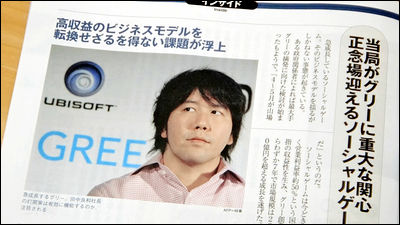What is the management strategy centered on the “Maybe acquaintance” function that allows you to find an acquaintance who did not think of Facebook?

Famous journalist
The Untold History of Facebook's Most Controversial Growth Tool
https://marker.medium.com/the-untold-history-of-facebooks-most-controversial-growth-tool-2ea3bfeaaa66
Levi's commentary begins with the background of Chamas Palihapitiya, a person who greatly contributed to the development of the ' Know Me ' function. Parihapitiya joined Facebook, one of his clients, after he was the youngest climber to Vice President of AOL , a major US Internet provider. Shortly after joining the company, he was assigned a key role in product marketing and operations.
At the time of joining Paris Happitiya, the number of Facebook users had peaked at around 90 million. Under such circumstances, Paris Happitiya launched a strategy that ' monthly active user (MAU) ' is an important indicator. At that time, it was common practice in the Internet industry that daily access and total number of accounts were important indicators. However, Parihapitiya discovered that MAU is the best indicator when users decide whether to continue using it, comparing all services on Facebook to MAU, `` If MAU does not increase, We will put a lever in place. '
Mr. Paris Happitiya is from the outside such as Facebook's birth employee Naomi Gleit , Javier Olivan, Alex Schultz from Spain, Danny Ferrante, a marketing planner from the UK, Blake Ross known for co-developing Firefox. And hired human resources, and formed a unique personal network called “Growth Circle” within Facebook. Gleit, Schultz, and Olivan, three of the talent recruited by Parihapitiya, later became Facebook executives.
One of the achievements of the Growth Circle team is search engine optimization (SEO) on Facebook. In 2007, Facebook made each user's profile page appear on Google Search, but even one year later, in 2008, Facebook's user profile page did not appear at the top of Google Search. Under such circumstances, Schultz and Gleit have developed a method of linking each user's profile page to each other so that it is ranked higher in Google search, and increased the number of inflows to Facebook.

Among the brilliant Growth Circle team's achievements, Levi highlights his greatest achievement as the 'Know Me' feature. This function is a system that automatically displays 'someone you may know' from Facebook users, and was invented not by Facebook but by business-specific SNS
The 'Know Me' function, which automatically searches for friends, provides convenience to many users, but some people questioned the system for this function. Gizmodo's Kashmir Hill has found his own experience of finding a great aunt he hasn't met on Facebook's `` Know Me '' feature, or his father's cheating hands who haven't been contacted for many years. And pointed out that the 'might know' feature could be a disadvantage for users.
Much of the criticism of the 'might know' feature is that 'Facebook doesn't know what principle works.' There has been criticism that Facebook has previously used information collected from the Internet to create a `` shadow profile '' and use it for the `` maybe acquaintance '' function, but Zuckerberg denied Was. However, according to Levi, Parihapitiya acknowledged that the Growth Circle team was using shadow profiles when introducing the 'might know' feature. You can understand how 'Shadow Profile' works by reading the following article.
What is a `` shadow profile '' created without permission even without using Facebook-gigazine

Levi also explained that the 'Know Me' feature makes full use of the concept of 'friends of friends.' The average user has about 40,000 'friends of friends.' The 'Maybe acquaintance' function finds new friends by calculating the number of common friends and good friends among the friends of the friends and analyzing them with machine learning.
The 'Know Your Friends' feature became the majority of Facebook friends around 2010, boosting the number of Facebook users. However, Levi said that from the performance of the `` may know '' function, it is almost certain that Facebook checks the user's mail, calendar, etc., saying that the `` may know '' function violates the privacy of the user. Claims.

Another issue is that the 'Know Me' feature may be displayed to people who are not very familiar. Zuckerberg acknowledges that registering an unfamiliar person as a friend may slightly reduce the user experience, and then increasing the number of friends benefits the community as a whole, and sometimes makes friends after registering as a friend It is claimed that. Zuckerberg CEO seems to have shown that Facebook will repaint the 'limit number that the human brain can maintain the relationship' proposed by the number of Dunbar .
Related Posts:
in Web Service, Posted by darkhorse_log






